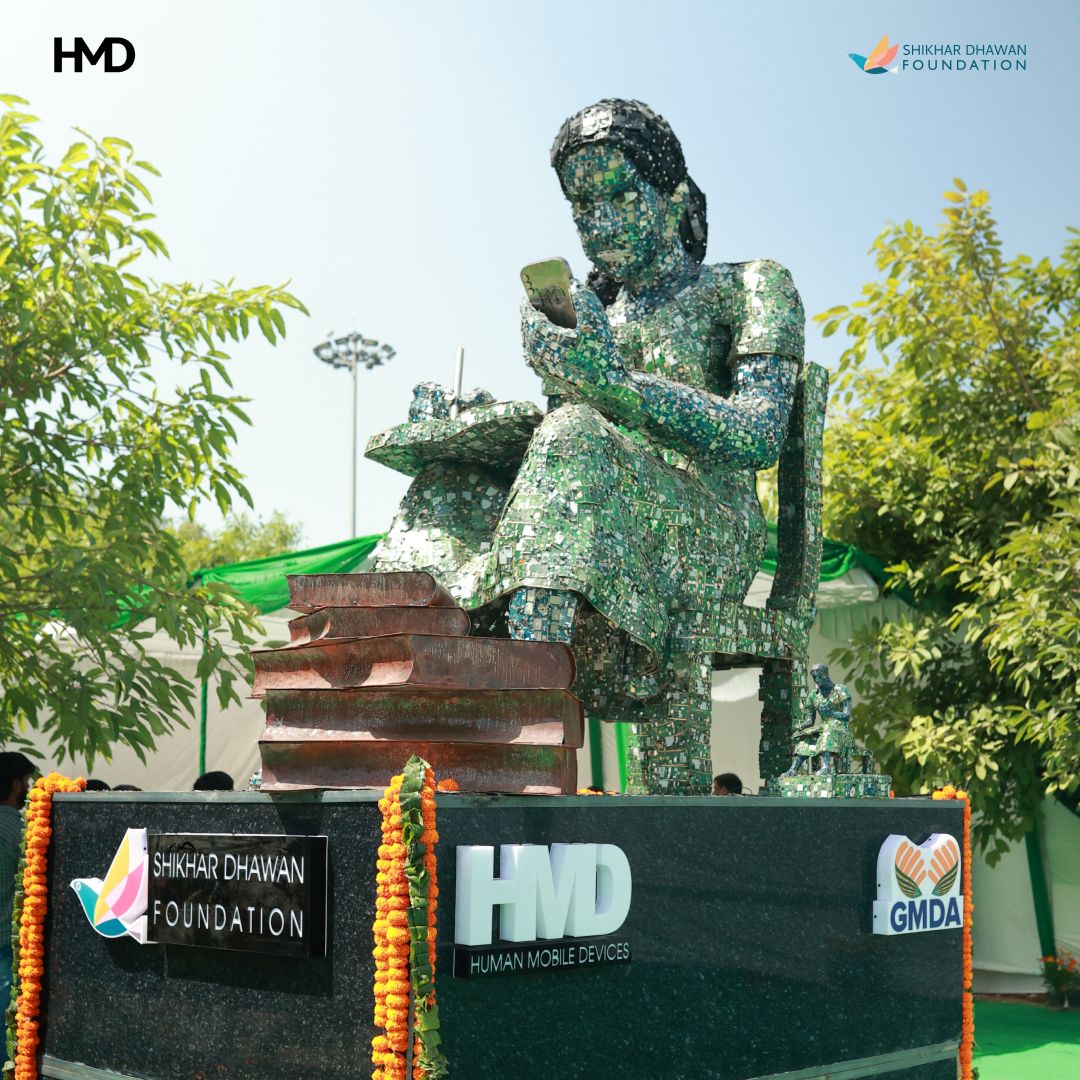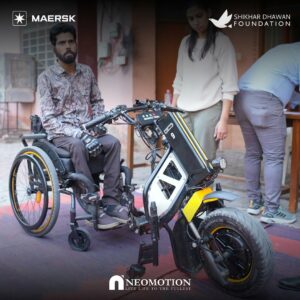In an innovative blend of art and environmental consciousness, Cybercity has unveiled its first digital waste sculpture, a striking installation crafted from end-of-life devices. This remarkable project was brought to life by the Shikhar Dhawan Foundation (SDF), with invaluable support from the Gurugram Metropolitan Development Authority (GMDA) and HMD Global. Positioned prominently at Iffco Chowk, Gurugram, this awe-inspiring sculpture is made from over 5000 discarded Nokia phones, serving as a powerful reminder of the urgent need to address the growing concern over e-waste.
Art as a Catalyst for Change
Art possesses a unique ability to connect with people on a profound level, particularly resonating with younger generations. This digital waste sculpture is no exception. By transforming discarded devices into a piece of public art, the installation not only captures attention but also sparks critical conversations about the impact of electronic waste on our environment.
Shikhar Dhawan Foundation: A Commitment to Education and Sustainability
The Shikhar Dhawan Foundation has long been dedicated to supporting the education of students from underserved communities. This project is a testament to their ongoing efforts to digitize education and provide resources to those in need. By partnering with HMD Global, the foundation extends its commitment to a sustainable future, encouraging young minds to think critically about environmental issues and take actionable steps towards a healthier planet.
The Role of E-Waste in Environmental Degradation
Electronic waste, or e-waste, is one of the fastest-growing waste streams globally. With the rapid advancement of technology, devices become obsolete quickly, leading to an accumulation of discarded electronics. These devices often contain hazardous materials that can leach into the environment, posing significant health and ecological risks. The digital waste sculpture at Iffco Chowk highlights the importance of recycling and repurposing electronic devices to mitigate these risks.
Inspiring Future Generations
The installation aims to inspire future generations to adopt sustainable practices and make environmentally conscious decisions. By showcasing the potential for creative reuse of e-waste, the sculpture encourages individuals and communities to rethink their relationship with technology and its lifecycle. It serves as a visual representation of the positive impact that collective action can have on addressing environmental challenges.
A Collaborative Effort
The creation of this sculpture was a collaborative effort that brought together various stakeholders. HMD Global, the home of Nokia phones, donated over 5000 end-of-life devices for this project, emphasizing their commitment to sustainability and corporate social responsibility. The GMDA’s support was instrumental in bringing the project to fruition, providing the necessary resources and space for this public art installation.
Conclusion
Cybercity’s first digital waste sculpture stands as a beacon of innovation and environmental stewardship. Through the combined efforts of the Shikhar Dhawan Foundation, HMD Global, and GMDA, this project not only beautifies the urban landscape but also delivers a powerful message about the importance of e-waste management and sustainability. It is a testament to the transformative power of art in raising awareness and inspiring change, particularly among the younger generations who will shape the future of our planet.
Let this sculpture be a reminder that every small step towards sustainability counts, and together, we can make a significant impact.











